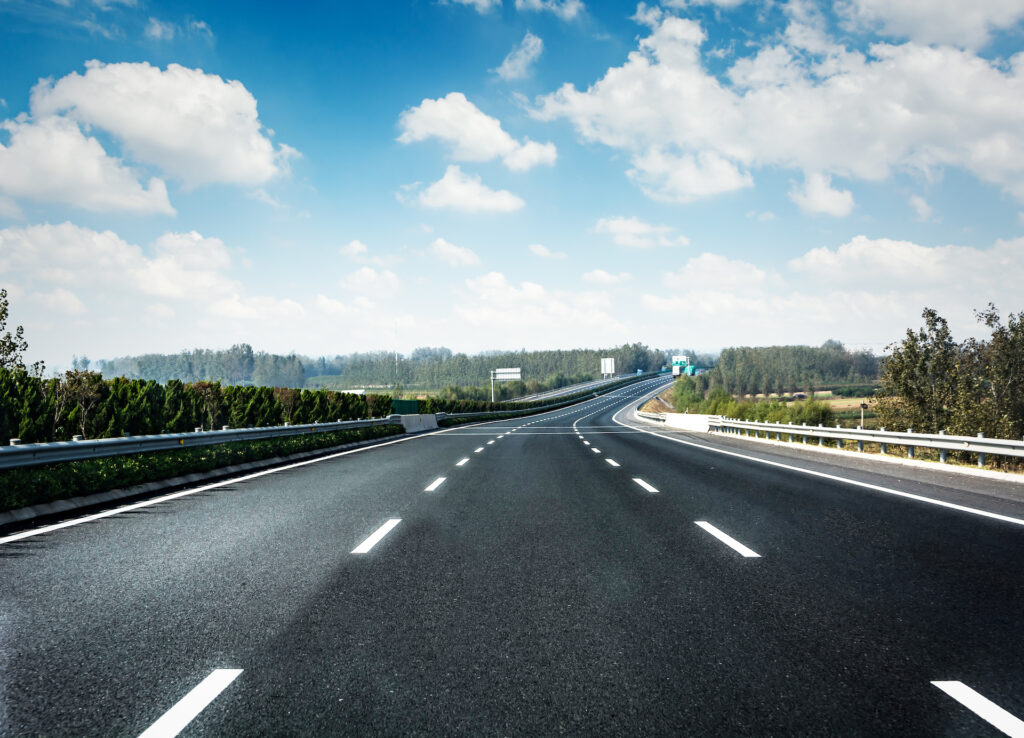A car is a great means of transportation that allows you to explore the world, but before every trip, it’s worth preparing for it. It doesn’t matter whether you’re going on vacation, a business trip, or visiting family – the organization of your journey impacts your comfort and safety. A long road trip is different from daily commutes, as it requires more attention, planning, and care for details that may often be overlooked. Read this article and find out how to prepare for a long car journey!
Checking your car before departure – don’t drive blindly!
Before hitting the road, you should ensure that your car is in perfect working order. Even if you drive it daily and don’t notice any issues, a long journey is a completely different story. A car breakdown abroad is the last thing you want to experience on your vacation.
What should you check before the trip?
✔ Tire condition – check if the tread is too worn. Also, ensure that the tire pressure meets the manufacturer’s recommendations – too low increases fuel consumption, while too high reduces grip. Don’t forget about the spare tire!
✔ Fluid levels – top up engine oil, coolant, and windshield washer fluid. On hot days, it’s especially important that the cooling system works properly, as engine overheating could leave you stranded on the roadside.
✔ Brakes – if you hear squeaking, experience longer braking distances, or the brake pedal feels unusual, it’s worth checking the brake pads and discs before departure.
✔ Battery – if you have trouble starting your car on colder mornings, it may be a sign of a weak battery. It’s worth checking, as a dead battery on the road can be a major hassle.
✔ Lights – check all of them – low beam, high beam, fog lights, turn signals, and brake lights. If you’re traveling abroad, make sure you have spare bulbs, as they are mandatory in some countries.
✔ Air conditioning and ventilation – if you’re driving in the summer, a working air conditioning system is essential. Check if it cools properly – if not, you may need to refill the refrigerant.
If you have any doubts about whether your car is ready for a long trip, visiting a mechanic is a good idea. It’s better to detect a problem in the workshop than on the highway.
Essential equipment – what to take in your car for a long trip?
Besides having a roadworthy car, you should also take care of its equipment. This includes not only mandatory items but also things that may prove extremely useful in case of a breakdown or unforeseen situations.
Mandatory equipment you must have in your car
In many countries, mandatory equipment includes:
- Fire extinguisher – must have valid certification.
- Warning triangle – in case of a breakdown or accident, you must place it at the appropriate distance from your vehicle.
- Reflective vest – in some countries, every passenger must have one.
- First aid kit – required in many EU countries (e.g., Germany and the Czech Republic).
Additional items that can save the day
- Spare tire or repair kit – not every car has room for a spare tire, but if yours does, make sure it’s in good condition.
- Jumper cables – essential if your battery dies.
- Flashlight and spare batteries – useful if a breakdown happens at night.
- Power bank and car charger – a dead phone on the road is an unpleasant situation.
- Wet wipes, paper towels, and garbage bags.
Comfort on the road
- Travel pillow and blanket – especially useful if you have passengers who want to take a nap.
- Snacks and water – having something to eat and drink within reach is helpful on long journeys.
- Audiobooks and music – they make the trip more enjoyable and help prevent road monotony.

Planning the route and stops – don’t get caught off guard!
A long journey is not just about covering kilometers but also about proper time and rest management. First and foremost, you need to choose the best route, so use navigation but always have a plan B. While Google Maps and other GPS systems work great, they can sometimes lead you through narrow, impassable roads. It’s always a good idea to check the route in advance and have alternative options. Avoid rush hours in cities – if you need to drive through large urban areas, check peak traffic times and try to adjust your route accordingly.
- Where to plan stops?
Many people wonder how often to take breaks. It is recommended to rest approximately every 2 hours of driving. A short break, even just 10 minutes, helps prevent fatigue. Refueling – better sooner than too late – if you are driving through unfamiliar areas, don’t assume a gas station will be just around the corner. Fill up when you still have about one-third of a tank left.
- Traveling with an overnight stay – when is it worth splitting the journey?
If you have more than 1,000 km to cover, consider an overnight stay along the way. It’s better to rest in a hotel than risk driving at night when fatigue is at its peak.
Traveling abroad by car – what do you need to remember?
If you’re planning a long car journey and crossing borders, there are a few additional things to keep in mind. Every country has its own regulations, document requirements, and specific traffic rules, so preparing in advance will help you avoid unpleasant surprises.
Documents needed to cross the border
- ID card or passport – within the Schengen area, you can travel with an ID card, but if you’re heading to non-EU countries like the UK or Dubai, a passport is required. Make sure it’s valid for at least several months beyond your planned departure date, as some countries have specific passport validity requirements.
- Driver’s license – in EU countries, licenses from member states are accepted without any additional formalities. However, if you’re traveling outside Europe, such as to Dubai, Japan, or the USA, an International Driving Permit may be required. Check the requirements for your destination country and apply for the document in advance.
- Vehicle registration certificate and insurance – take your vehicle registration certificate and ensure your liability insurance covers international travel. In some countries, a Green Card is required (e.g., Montenegro, Albania, Ukraine). If you’re renting a car, carry the rental agreement, as it may be needed during road inspections.
- Road tolls and vignettes – check in advance, as highways are not free in every country, and payment methods vary depending on the location.
Road regulations – differences that may surprise you
Every country has its own rules, so it’s worth checking the most important differences before your trip. Start with mandatory equipment – in France, every driver must carry a breathalyzer, while in Spain, a reflective vest is required for every passenger who exits the vehicle on the roadside. In Germany, some sections of the highway have no speed limits, but in Norway, for example, the maximum highway speed is 110 km/h. Some countries require low-beam headlights to be on at all times, while others only mandate their use in specific conditions.
Additional health insurance
If you’re traveling in Europe, it’s a good idea to get an EHIC (European Health Insurance Card), but remember that it does not cover all medical expenses, such as private doctor visits or medical transport back to your home country.
Additional travel insurance is a small cost but can be crucial in case of sudden illness or an accident. If you are traveling outside Europe, consider purchasing a policy with a higher medical expense coverage limit.
Traveling to a country with left-hand traffic
If you’re heading to the UK, Ireland, Malta, or Australia, you need to prepare for driving on the left side of the road. This can be a big challenge, especially at roundabouts and intersections. If you plan to rent a car in such a country, make sure you feel comfortable with the steering wheel on the right-hand side.
Driver and passenger comfort – how to make the journey more enjoyable?
A long drive can be exhausting, but with proper preparation, your trip can be pleasant and stress-free.
If you want to avoid fatigue, plan regular breaks, ideally every 2–3 hours. You might feel fine, but after several hours of driving, you’ll notice the lack of rest. Just 10 minutes is enough to stretch your legs and refresh your mind. Try to avoid monotonous driving as well – on the highway, change your driving pace, listen to music, audiobooks, or podcasts to prevent falling into a routine. Don’t forget about proper seating posture! Adjusting your seat and lumbar support correctly helps prevent back pain.
Traveling with children – how to keep them entertained?
For adults, a long drive can be boring, but for a child, it can feel like torture. Here are a few tricks to prevent whining:
- word games and travel games – for example, “Guess What I See,” counting cars of a specific color, or “20 Questions.”
- audiobooks and cartoons – they can be played through the car speakers or headphones.
- snacks and drinks – a hungry child is a cranky child, so keep some healthy snacks on hand.
What if someone has motion sickness?
Unfortunately, not everyone tolerates car rides well, so it’s a good idea to have motion sickness medication (it’s best to take it before the trip begins). Additionally, a person prone to motion sickness should avoid reading books or looking at a phone, as this can worsen symptoms. Fresh air can help ease discomfort, so ensure proper ventilation in the vehicle.
Emergency situations – how to handle problems on the road?
Even the best-planned trip can bring unexpected surprises. A car breakdown abroad, sudden weather changes, or a road accident – it’s important to be prepared for different scenarios so you don’t panic and know what to do.
What to do if your car breaks down?
First and foremost, stay calm and secure your stopping location. If your car starts malfunctioning, pull over to the roadside or a parking bay. If that’s not possible, stop as close to the edge of the road as you can. Turn on your hazard lights, and if you’re on a highway, place a warning triangle at the appropriate distance (following local regulations).
Next, try to diagnose the problem. It could be a dead battery, a flat tire, or an overheated engine. It’s helpful to have jumper cables, a tire inflator, or basic tools with you. If necessary, call roadside assistance or use your insurance’s assistance service if you have one.
While waiting for help, stay calm. Remember! On a highway, it’s much safer to exit the vehicle and wait behind the barriers.
How to react to an accident on the road?
Stop in a safe place – if you’re involved in or witness an accident, stop in a location that does not obstruct traffic.
Secure the scene – turn on your hazard lights, place a warning triangle, and wear a reflective vest.
Call emergency services – in Europe, the emergency number is 112, but other countries may have different numbers. Provide your exact location and details about any injured individuals.
Document the damage – in the case of a minor collision, take photos and fill out a joint accident statement with the other party. For more significant damage, calling the police may be necessary.
Air travel – renting a car at your destination
A long journey doesn’t always mean driving hundreds of kilometers in your own car. Sometimes, it’s more convenient to fly and rent a car at your destination – a great option if you want to explore a new place freely without relying on public transport or expensive taxis. Car rental companies offer a wide selection of vehicles, from budget-friendly city cars to luxury SUVs and sports models.
If you’re planning a trip to Dubai and want to enjoy the convenience of driving your own car, we invite you to our car rental in Dubai. We offer a diverse fleet of vehicles tailored to your needs! Check out our offers and book your car before your arrival to enjoy full independence on the road as soon as you land!
Long car journey – summary
A car trip can be comfortable, convenient, and safe if you prepare properly. Checking your vehicle’s condition, packing essential equipment, planning your route and rest stops wisely, and familiarizing yourself with foreign road regulations are key to a successful journey.
Now all that’s left is to hit the road and enjoy the trip!




